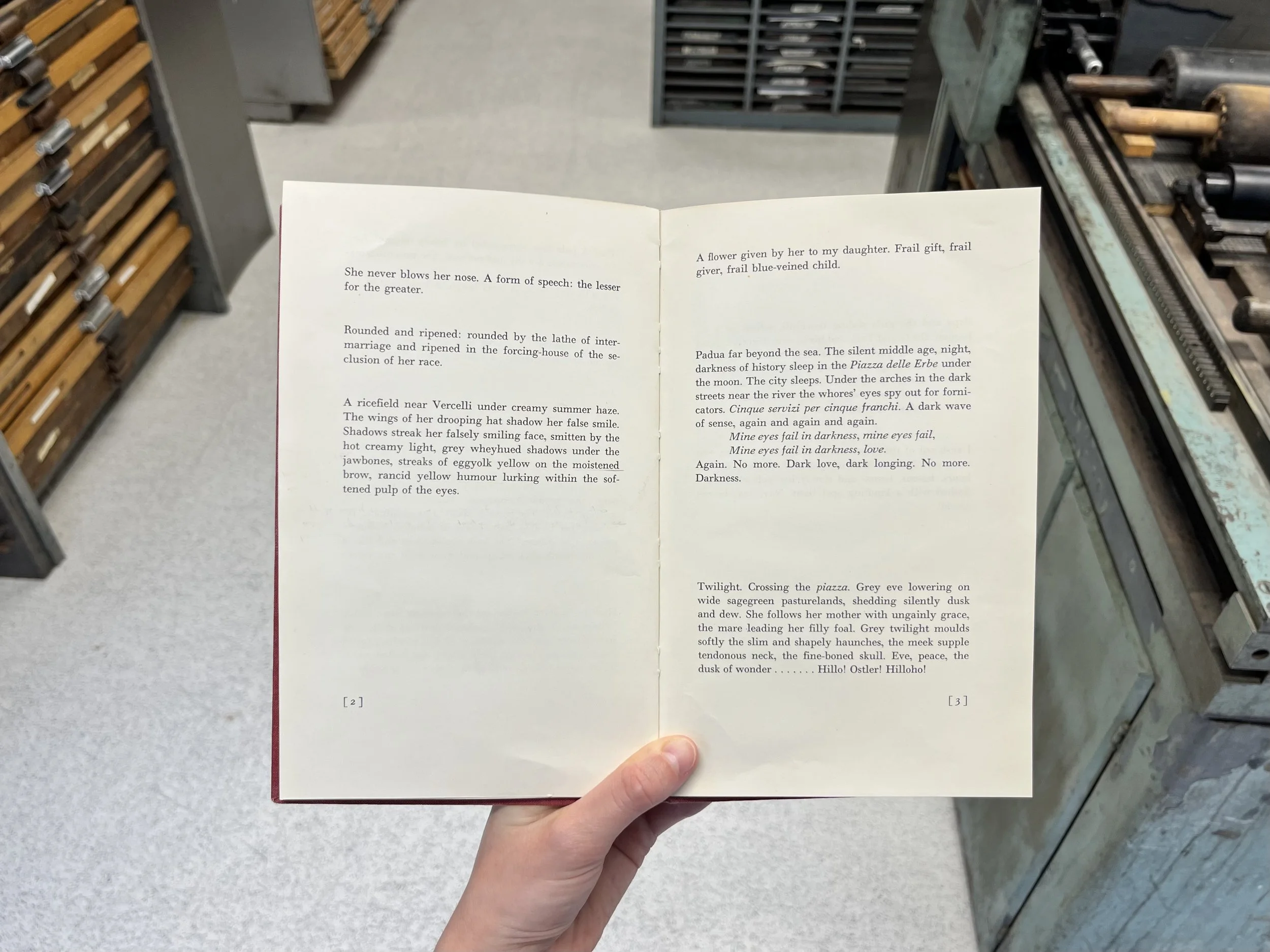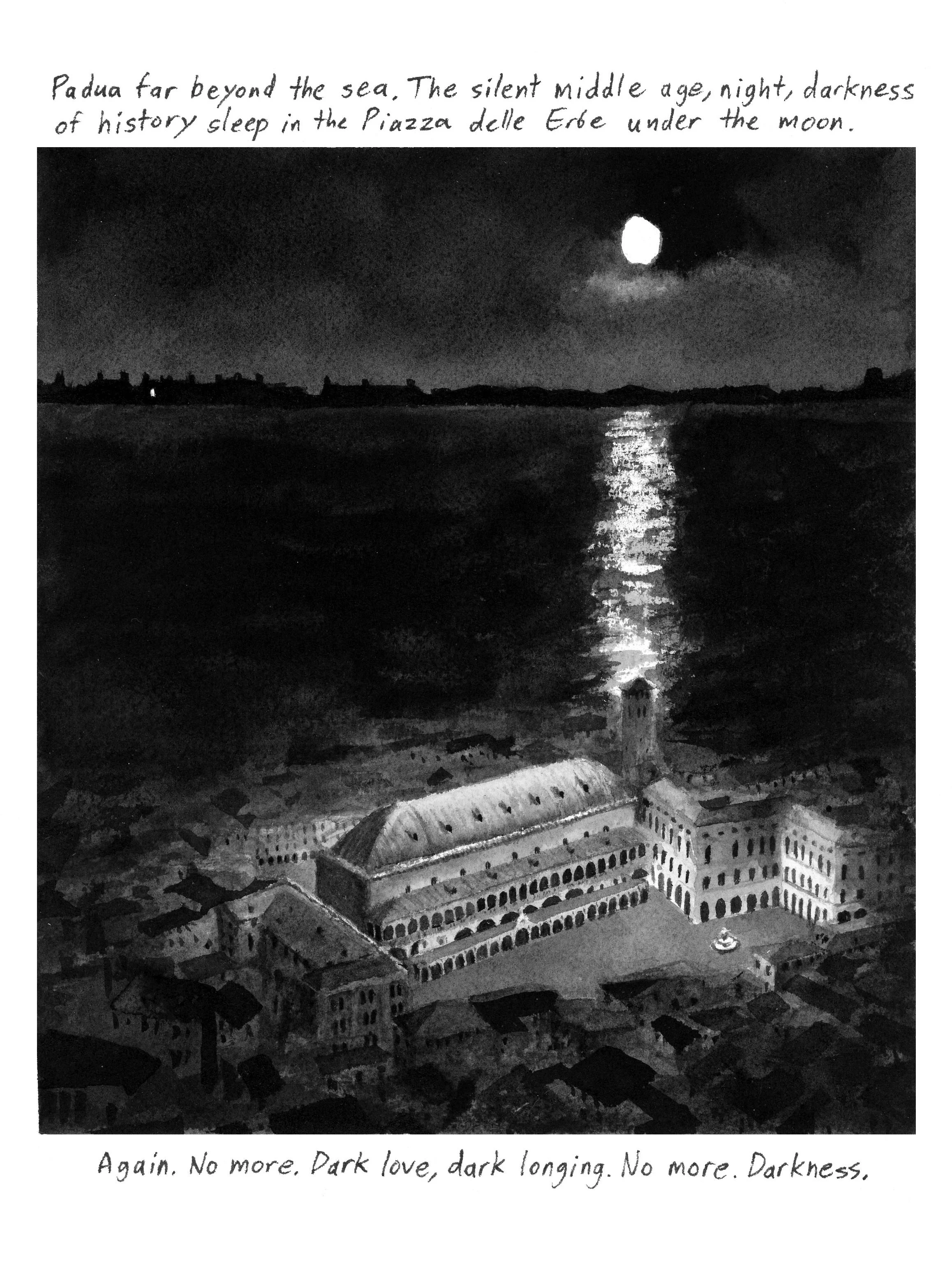In my first reading of Giacomo Joyce, one image stood out to me above all others - the image of Padua beyond the sea, sleeping under the moon.
Joyce, Giacomo Joyce, page 3
JP
ED: Your beautiful painting of Padua is in black and white, giving it an eerie, lonely kind of feeling- the Piazza looking small against the vast darkness of the sea. The reflection of the moon on the water feels ghostly.
What is the effect that is intended through the use of black and white in these specific moments? I’m intrigued especially by how they operate in the wider visual identity of your piece, as moments of divergence from the brightness and warmth of other pieces.
JP: The image of Padua is indeed meant to feel a bit eerie (perhaps haunted by the ghosts of the Middle Ages?) but also nostalgic. The horizon line is placed high so as to give the impression that the city square and surrounding houses sit below the surface of the water—they are an evocation of a lost past. I guess black and white seemed appropriate for such a memory. The low houses on the horizon line represent Dublin (Joyce’s lit window from which he is remembering Padua “across the sea,” and the silhouette of the Martello tower from Ulysses at the far right.
As you say, I did try to spread out the black and white sections somewhat evenly throughout the piece, as I tried to do with the various techniques and styles in general. This I hope serves to lend the whole a kind of rhythmic consistency and a sense that the visuals are made in cross reference to each other.
TST
ED: Your shot at 2:10 reminds me of Joyce writing about the moonlight over the piazza in Padua. Here, the moon shining through these grey clouds and the light from the city buildings is very evocative. It’s modern with an old-fashioned underbelly that is very pleasing when considering the notion of evolutionary translation.
TST, Giacomo Joyce, 2:07-2:18
TST: I think that when there's that aura of nature in moments, there's a bit of weight to them. Even the shot with the moonlight over the piazza, and then my shot of the moonlight in the midst of Lampton Quay and the CBD of Wellington. It's not exactly natural, but there's the weight of the moon that's being drawn, or maybe it's the light that is also this fascinating reveling in the power of light. If you're asking me what the natural world means to me, in this context it's used as a grounding tool.
❦
It all begins with an idea —
Interpretation entails illumination: light must negotiate with darkness the possibility of colouring the truth, of crediting moonshine as true talk, of land and sea rhyming.


